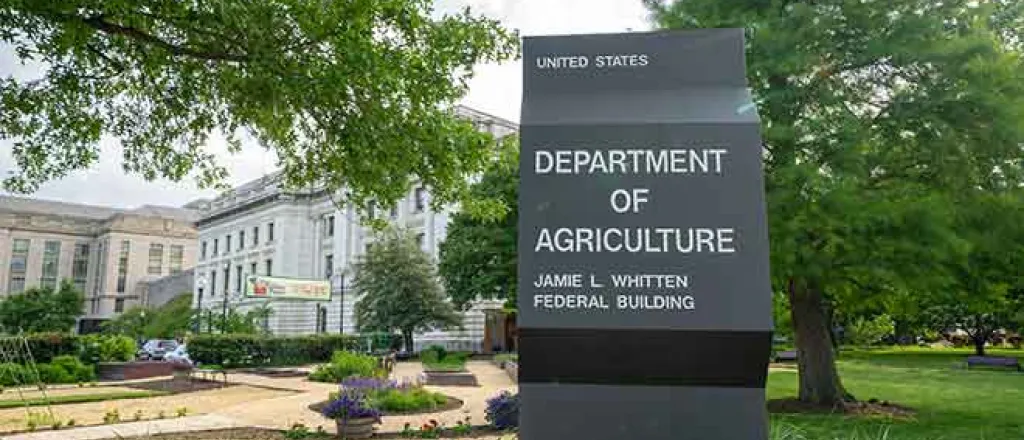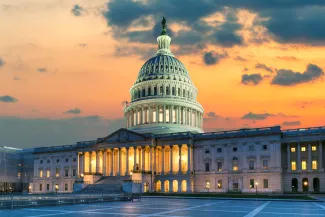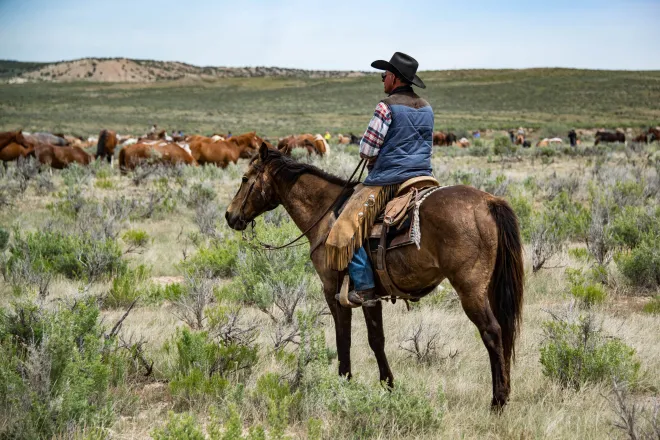
Farmers struggle with ‘bleak’ situation as Congress waffles on new Farm Bill
(Missouri Independent) The cost of fertilizer is up; crop prices are down. Farmers have struggled through drought, and ranchers sold off huge swaths of their herd.
To top it all off, Congress has yet to pass a new iteration of the Farm Bill, which expires Monday. And it likely won’t take action on the wide-ranging legislation, which offers everything from nutritional assistance to farm disaster recovery aid, until late this year.
The slow action on the legislation isn’t unusual, but as farm income continues to slide, producers are struggling to make ends meet. Tim Gibbons, communications director for the Missouri Rural Crisis Center, noted it currently costs more to raise a bushel of corn than farmers make when they sell it.

The prices farmers receive for major grain crops such as corn and soybeans are down 20 to 40 percent from highs set in 2022 in the months after Russia invaded Ukraine, according to U.S. Department of Agriculture data. But that spike was an aberration, Gibbons said.
“We haven’t had really high prices for decades … that really support farmers over the long term,” Gibbons said, “so that not only can they stay on the farm, but pass that farm on to the next generations.”
Researchers at the University of Missouri expect farm income to drop by 35 percent by next year, compared to a high in 2022. While they still expect income to remain above what farmers saw between 2015 and 2020, it’s a steep drop.
“Farmers will have a tighter situation … than they experienced in the last three years, and they’ll have to be much more cognizant about having a very strategic marketing plan in order to make a good cash flow,” said Bob Maltsburger, a senior research economist at the Food & Agricultural Policy Research Institute at the university.
The “bleak” state of the farm economy — as U.S. Senator Jerry Moran, a Kansas Republican, put it — has agricultural groups and heartland lawmakers clamoring for an updated Farm Bill. But partisan gridlock in Washington, D.C., and tension over what programs to prioritize in the enormous bill have made it difficult for lawmakers to find common ground.
“We need a Farm Bill in place,” Moran said on the Senate floor earlier this month, “even if it’s the current one, but the current one is insufficient to meet the needs of the disaster that is occurring in the incomes of farmers across the country.”
The Farm Bill, the primary vehicle for food and agriculture policy in the U.S., expires Monday. While some of its banner programs — including crop insurance and nutrition assistance — will continue even if the legislation lapses, lawmakers and farm groups have said it’s essential to get assistance to struggling farmers. Moran urged colleagues to extend the existing Farm Bill while a more thorough rewrite is still pending.
Competing for funds
The Farm Bill’s single largest chunk of spending — about 75 percent — supports a variety of programs to combat food insecurity, including the Supplemental Nutrition Assistance Program, or SNAP, commonly known as “food stamps.” Its other banner programs include crop insurance and support for farmers when crop prices are low. The legislation also provides funds to encourage conservation and more sustainable farming.
Prominent in this year’s debate is how to permanently increase spending on conservation and climate-friendly practices. Congress previously provided $20 billion through the Inflation Reduction Act, passed in 2023, to help farmers plant cover crops and trees; alternate grazing and resting grassland and restore wetlands.
Andrew Lentz, who leads agriculture policy for the Environmental Defense Fund, said that funding helped more farmers participate in historically underfunded conservation programs. He said his organization hopes Congress takes advantage of the “huge opportunity” to make those funding levels permanent.

© iStock - Pashalgnatov
While Democrats want to ensure those funds are spent on practices that reduce greenhouse gas emissions from agriculture, those requirements weren’t supported in the Republican-controlled U.S. House committee.
“If Congress is able to do that,” Lentz said, “they’ll be able to maintain these elevated funding levels and also maintain the climate focus of those funds in order to address the root causes of climate change and…help farmers tap new markets for lower carbon agricultural goods.”
But Jennifer Ifft, an associate professor at Kansas State University, said Congress can’t increase the federal deficit when it passes a new Farm Bill, creating tension between lawmakers over how to prioritize programs. Republicans in the U.S. House of Representatives supported increasing funding for the farm safety net, which supports farmers when crop prices are low.
That’s hard enough to do this year, Ifft said, but it will be even more difficult to pull off next year with crop prices projected to keep declining, increasing the cost of the safety net.
“It’s probably not going to get easier to compromise,” Ifft said.
The House Republican version of the bill also cuts $30 billion from nutrition assistance, a nonstarter with Democrats.
U.S. Senator Debbie Stabenow, a Michigan Democrat and chair of the Senate Committee on Agriculture, called that bill and Senate Republicans’ “framework” for a Farm Bill “flawed,” noting it cuts the nutrition budget and “walks away from the progress we have made to address the climate crisis.”
Gibbons said the conversation is missing better options to help with crop prices. He argues managing supply and adjusting decisions to meet market needs is a lower-cost alternative to ensure farmers get a fair price for their crops. But that’s not part of the policy discussions, he said.
“The fight,” Gibbons said, “is once again over, ‘How hard are we going to make it for hungry people in need to get food,’”
Missouri Independent is part of States Newsroom, a nonprofit news network supported by grants and a coalition of donors as a 501c(3) public charity. Missouri Independent maintains editorial independence. Contact Editor Jason Hancock for questions: info@missouriindependent.com. Follow Missouri Independent on Facebook and X.
















